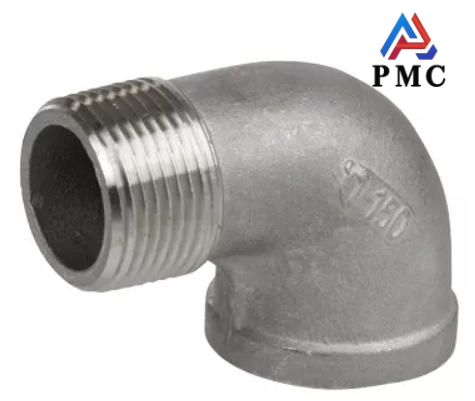
Introduction of 304 Stainless Elbows, Characteristics and Applications
304 stainless elbows are very critical pipe fittings in the piping system. Their main function is to connect two pipes with the same or different nominal diameters, and make the pipe turn at a certain angle as required to change the direction of the pipe and meet various complex pipe layout requirements. They can be seen in the piping systems of many industries such as construction, chemical industry, food, and medical treatment.
304 stainless elbows classification
According to the production process, it can be divided into: welding elbow, stamping elbow, casting elbow, etc.
According to the material, it can be divided into: carbon steel, cast steel, alloy steel, stainless steel (304, 316, 310, 321, 301), copper, aluminum alloy, etc. (However, the small wood factory is pure forging)
The production method can be divided into: pushing, pressing, forging, casting, etc. (Now it is generally pure forging)
304 stainless steel elbows can also be divided into equal-diameter elbows and non-equal-diameter elbows. Equal-diameter elbows are used to connect pipes with the same outer diameter, and non-equal-diameter elbows are used to connect pipes with different outer diameters. Manufacturing standards include: national standard, electrical standard, water standard, American standard, German standard, Japanese standard, etc.
According to the radius of curvature: it can be divided into long radius elbow and short radius elbow. Long radius elbow means that its radius of curvature is equal to 1.5 times the outer diameter of the pipe, that is, R=1.5D. Short radius elbow means that its radius of curvature is equal to the outer diameter of the pipe, that is, R=1.0D. (D is the diameter of the elbow, R is the radius of curvature).
According to pressure level: there are about seventeen types, which are the same as the American pipe standards, including: Sch5s, Sch10s, Sch10, Sch20, Sch30, Sch40s, STD, Sch40, Sch60, Sch80s, XS; Sch80, SCH100, Sch120, Sch140, Sch160, XXS; among which the most commonly used are STD and XS.

Characteristics of 304 stainless steel elbows
1. Strong corrosion resistance: 304 stainless steel elbow contains 18% chromium and 8% nickel. This unique composition ratio enables a dense passivation film to be formed on its surface, which effectively resists general corrosive media such as air, water, steam and some common acid and alkali solutions.
2. Good heat resistance: 304 stainless steel elbows can withstand temperatures up to 800°C and can maintain stable chemical and mechanical properties in high temperature environments. In the steam piping system of industrial boilers, the steam temperature is often high. 304 stainless steel elbows can adapt to such high temperature environments, ensuring stable operation of the piping system without deformation or performance degradation, and ensuring normal steam delivery.
3. Excellent processing performance: 304 stainless steel elbows have good hot processing properties such as stamping and bending, are easy to process and form, and can be made into products of different shapes through various processing methods to meet the needs of different projects.
4. Hygienic performance meets standards: The hygienic performance of 304 stainless steel elbows fully complies with relevant standards and is suitable for use in food processing, storage and transportation. Its material will not cause secondary contamination to the media it contacts, ensuring food safety and hygiene.
Application areas of 304 stainless steel elbows
1. Architecture and decoration: In building water supply and drainage systems, 304 stainless steel elbows are widely used to ensure the smooth discharge of domestic water and sewage. In the field of architectural decoration, 304 stainless steel elbows also play an important role. For example, they are used in the production of railings and handrails. Their bright surface and elegant appearance not only enhance the overall aesthetics, but also withstand wind, sun, rain, and maintain long-term beauty and durability.
2. Food and Beverage Industry: In the production process of food and beverages, the requirements for hygiene and safety are extremely high. The sanitary performance of 304 stainless steel elbows fully meets the relevant standards and will not cause secondary pollution to food and beverages. Therefore, they are widely used in pipeline systems in the links of raw material transportation and finished product filling.
3. Chemical and Pharmaceutical: The chemical and pharmaceutical industries often involve various corrosive media and strict hygiene requirements. 304 stainless steel elbows can withstand the erosion of a variety of chemicals due to their good corrosion resistance. In the pharmaceutical industry, their hygiene and corrosion resistance also meet the strict standards of drug production, ensuring the quality and purity of drugs during production and transportation.
Conclusion
304 stainless steel elbows play a key role in many fields such as construction, food, chemical industry, and automobiles due to their strong corrosion resistance, good heat resistance, superior processing performance, and hygienic performance. Different types of 304 stainless steel elbows, such as elbows classified by angle, production process, curvature radius, and pressure level, can meet the needs of various complex piping systems.
Read more: Introduction of Food Grade Stainless Elbows


